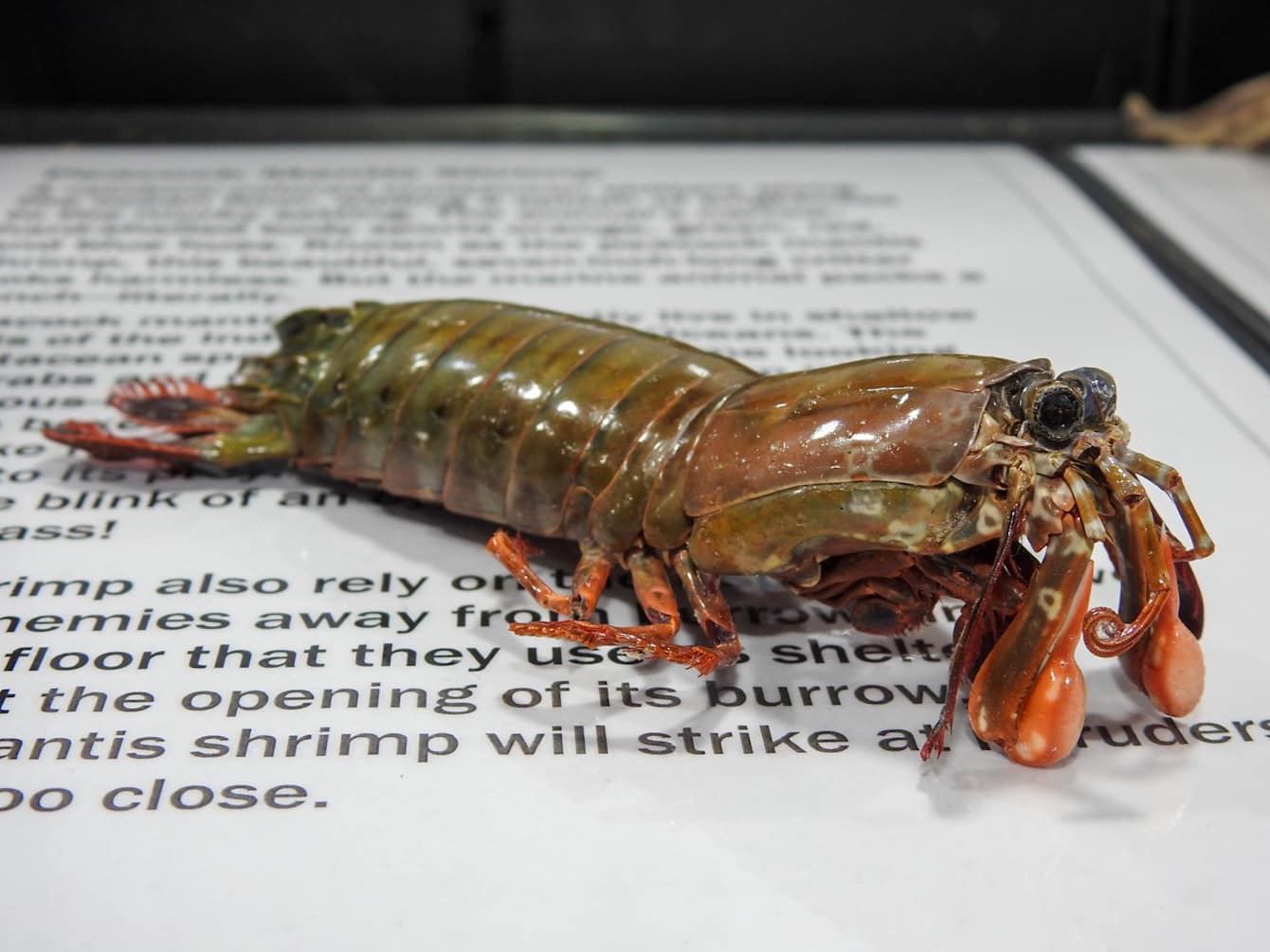
What is a Mantis Shrimp?
The peacock mantis shrimp may look like a praying mantis but it is neither mantis nor shrimp. Rather, they belong to the order Stomatopoda and are distantly related to shrimp, crabs, and lobster. Regardless of how scientists decide to categorize them though, these fascinating creatures are certainly worthy of study.
Fun facts
The mantis shrimp can punch with the speed of a .22 caliber bullet—strong enough to break the shells of its prey, as well as aquarium glass.
When a mantis shrimp hits its target, the velocity causes water to vaporize, then implode with a sharp bang, extremely high heat, and a flash of light—all of which is felt by the prey animal as an additional blow.
When the striking limb of a mantis shrimp is not in use, it lies folded under the animal’s body, compressing a saddle-shaped spring that drives the animals stupendous strikes.
Some species of mantis shrimp wield spear like limbs that can impale their targets, instead of club-like limbs for bashing them.
Their super-strong punches aren’t the only notable thing about the mantis shrimp. The animal’s eyes can see a huge variety of light wavelengths, including those in the ultraviolet spectrum.
The Peacock Mantis Shrimp’s Amazing Eyes
The mantis shrimp is the only animal on Earth that can see Circular Polarized Light (CPL), a system frequently used in high-tech communications. According to the Wired article “Shrimp Eyes May Hold Key to Better Communications” (Brandon Keim, March 2008) CPL is used in many satellite systems, to detect skin cancer, and perhaps one day in mobile phones. Mantis shrimp probably use CPL to communicate during sexual and territorial encounters although why is not yet known.
The mantis shrimp eye is further impressive for being able to see 100,000 different colors – 10 times that of humans. Finally, according to the PopSci article “The Eye of the Mantis Shrimp” (Matt Ransford, March 2008) the eye is divided into three regions which track motion, form, depth, and color without help from the brain.

